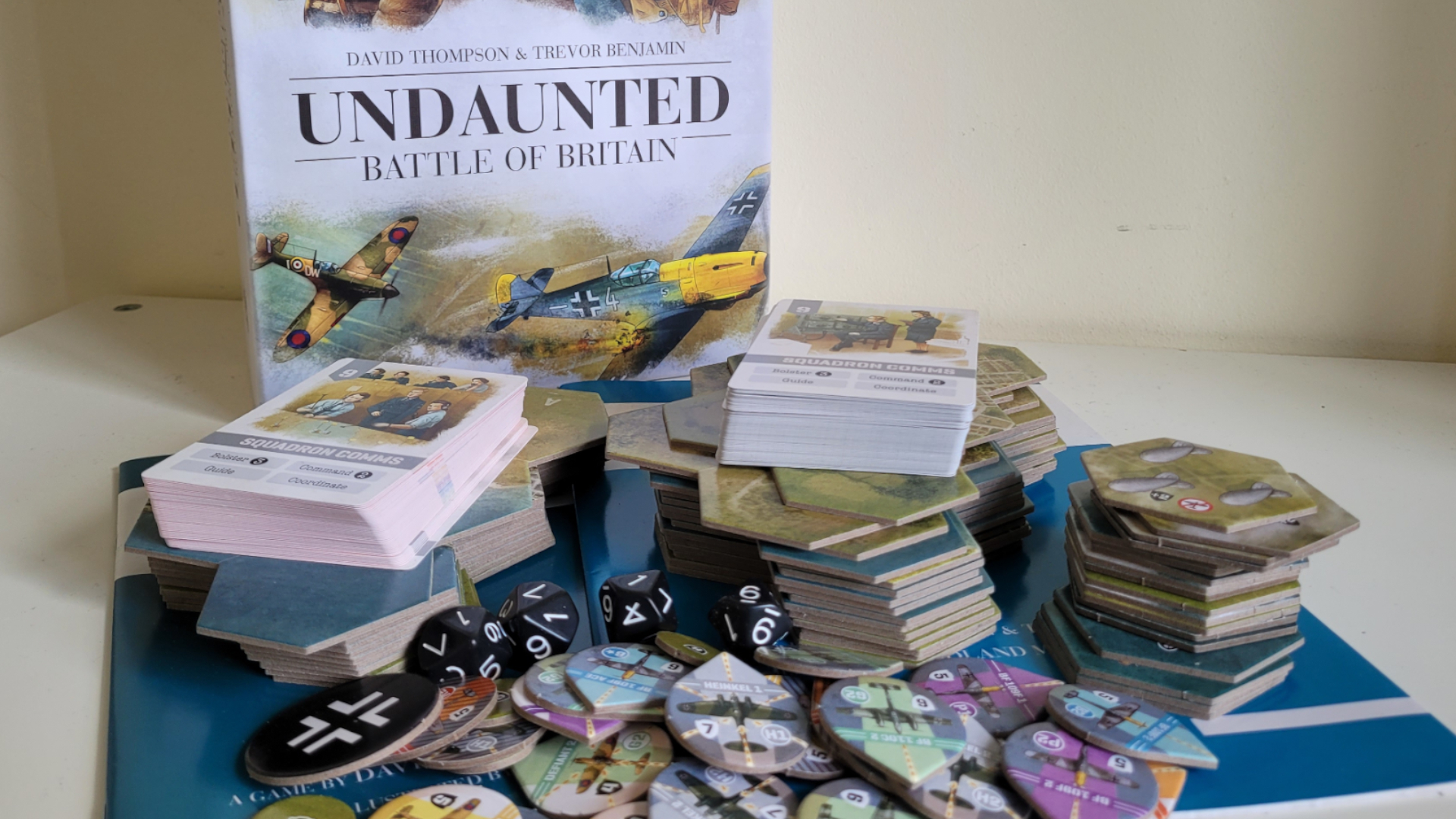
There's a lot of pressure on Undaunted: Battle of Britain. Undaunted ranks amongst the most exciting new series of the last few years because it marries deck-building (where you create your card deck as you play) with second world war combat in a surprisingly successful combination, so expectations are high.
Fortunately, it's up to the task - mostly. Games so far have been set in Normandy, North Africa, and Stalingrad, but Undaunted: Battle of Britain is a very different beast. Instead of ground combat, we’re looking at aeroplane action, with a few significant changes to the formula as a result... some good, some not so great. Overall, though? It's a novel addition that should appeal to long-time players and newcomers alike.
Undaunted: Battle of Britain - features
Undaunted: Battle of Britain is a strategy wargame set during 1940 and, as the name would suggest, it puts you in control of the Luftwaffe or RAF during a pivotal moment of World War Two. However, it differs from its peers due to a feature more commonly seen in the best board games: deckbuilding. This means players will construct a deck of cards containing various abilities like movement or attacks over the course of the game.
Because this instalment in the series is standalone, you don't need other Undaunted games in order to play.
How Undaunted Battle of Britain works
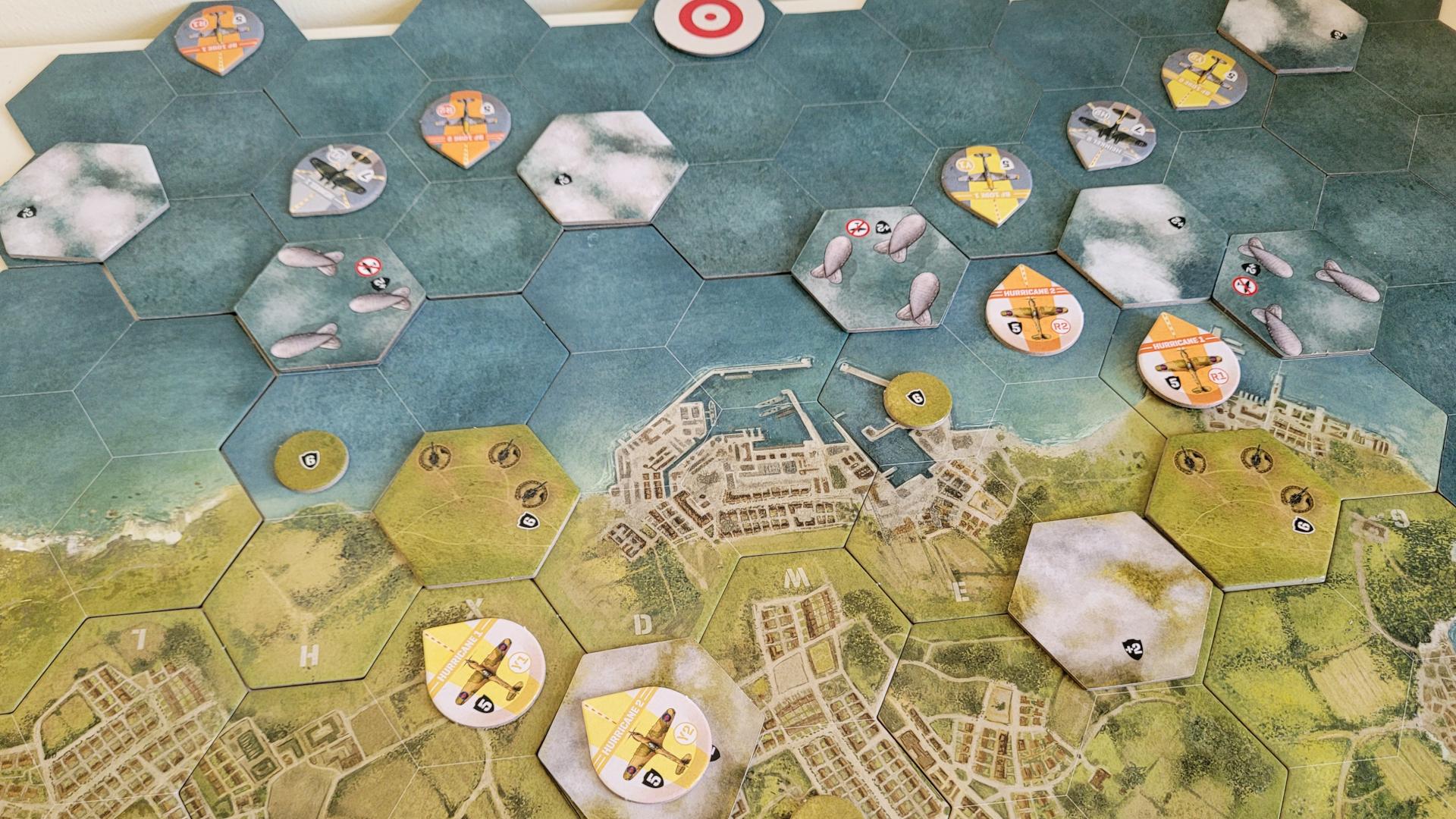
- You play cards to move and fight, or to add cards to your deck
- Aircraft have to move on their turn and can either change heading or attack
- Combat is resolved with dice based on range, cover, and target direction
Undaunted: Battle of Britain starts with you picking a scenario from the eleven provided, and each one has a hex map you need to construct from modular board pieces. It’ll also show you where to place your starting units and give you a starter deck with cards related to those units. Finally, there will be a win condition you have to fight to achieve, most often eliminating a certain number of enemy aircraft or ground targets.
On your turn, you’ll draw four cards from your deck and select one to bid for the initiative. Each card has a different value, and the highest bid gets to go first and play their remaining three. Most cards activate aircraft on the map, which means they have to move at least one hex, but can go up to their move allowance. In addition, they can either manoeuvre - which means changing where they're facing by one hex-side up to a number of times listed on the card - or attack.
To be eligible for an aerial attack, the unit must have a target in its attack vector which varies by aircraft. Most fighters can only attack straight ahead but aeroplanes with turrets, like bombers, can fire in multiple directions. You take the defence value printed on the target counter and add the range and penalties for cover (like other aircraft, clouds, or barrage balloons) to get a target number. Then you roll some ten-sided dice depending on the card, with extra dice if you’re attacking the target’s rear, and see if any match or beat that target.
Who goes first can be key in determining whether your plans come to fruition or not
A hit removes one of the matching cards from the opponent’s deck or, if there are no such cards remaining, removes the counter from the board. Some aeroplanes can also attack ground targets like ships or anti-aircraft installations.
The other type of card in the deck is 'comms'. These represent decisions made on the ground and tend to be used to add new cards to your deck, but there’s a catch. If you play one of these cards or use it for the initiative, and the planes in the matching section are too far apart, they become disordered. This means adding a useless disorder card to your deck which does nothing but clog it up. Comms cards can also be used to remove disorder or to replay a matching aeroplane card from your hand.
Undaunted: Battle of Britain - gameplay
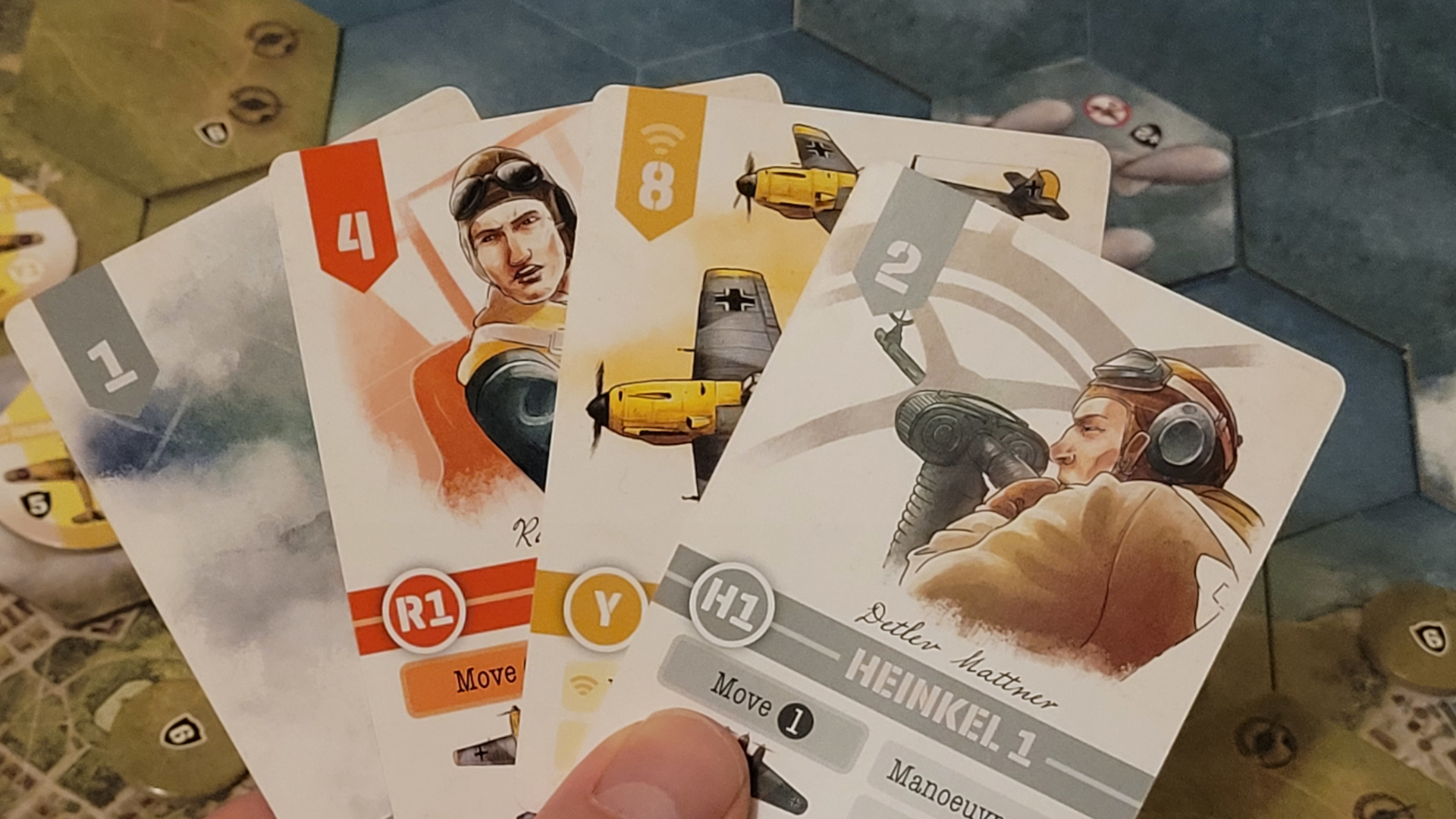
- Exciting dynamic between the cards in your hand and action on the board
- Strongly encourages forward planning, but the randomness of dice and cards will often force your plans awry
- Lots of well-designed scenarios provide good replay value
Like its predecessors, Undaunted: Battle of Britain makes a great job of combining the twin pressures of managing your deck with manoeuvring on the board. However, here the latter takes precedence over the former. The need to move your aircraft every time they activate alongside the fact they can only change direction after they move forces you to try and think ahead, setting up potential traps for your targets while avoiding those of your opponent.
This is quite difficult to do, and you’ll often find yourself mimicking real-life pilots and settling for zooming through the target hex, then trying to turn and strafe their tail. When you can pull it off, however, it’s supremely satisfying and the game rewards players who can plan for this effectively. However, it also throws you constant curveballs in the form of the fickle card draw, which can easily force you to overshoot or give your opponent an easy escape before you can act.
The varied setup makes up for the relative sameness of the planes involved
Making your card draw each turn work in your favour is one of the key selling points of the Undaunted series, and Battle of Britain is no exception. Who goes first can be key in determining whether your plans come to fruition or not, and that makes the initiative bid a nail-biting moment. It’s generally the case that more useful cards have higher initiative values, so you’re caught in a quandary between winning the bid and getting the most use out of your hand each turn.
As such, you’ll want to use those comms cards to bulk your deck or get your existing units to act twice. Doing so forces you to check your formation and, again, an unlucky draw can force you out of position and into taking discord cards. The trouble is that when it comes to deckbuilding, there simply isn’t the same card variety in Undaunted: Battle of Britain as there is in the previous games in the series. Most of the aircraft differ only in speed, guns, and manoeuvrability rather than the plethora of different units you might see on the ground. So while there are plenty of tactical decisions to make, the strategic aspect falls flat.
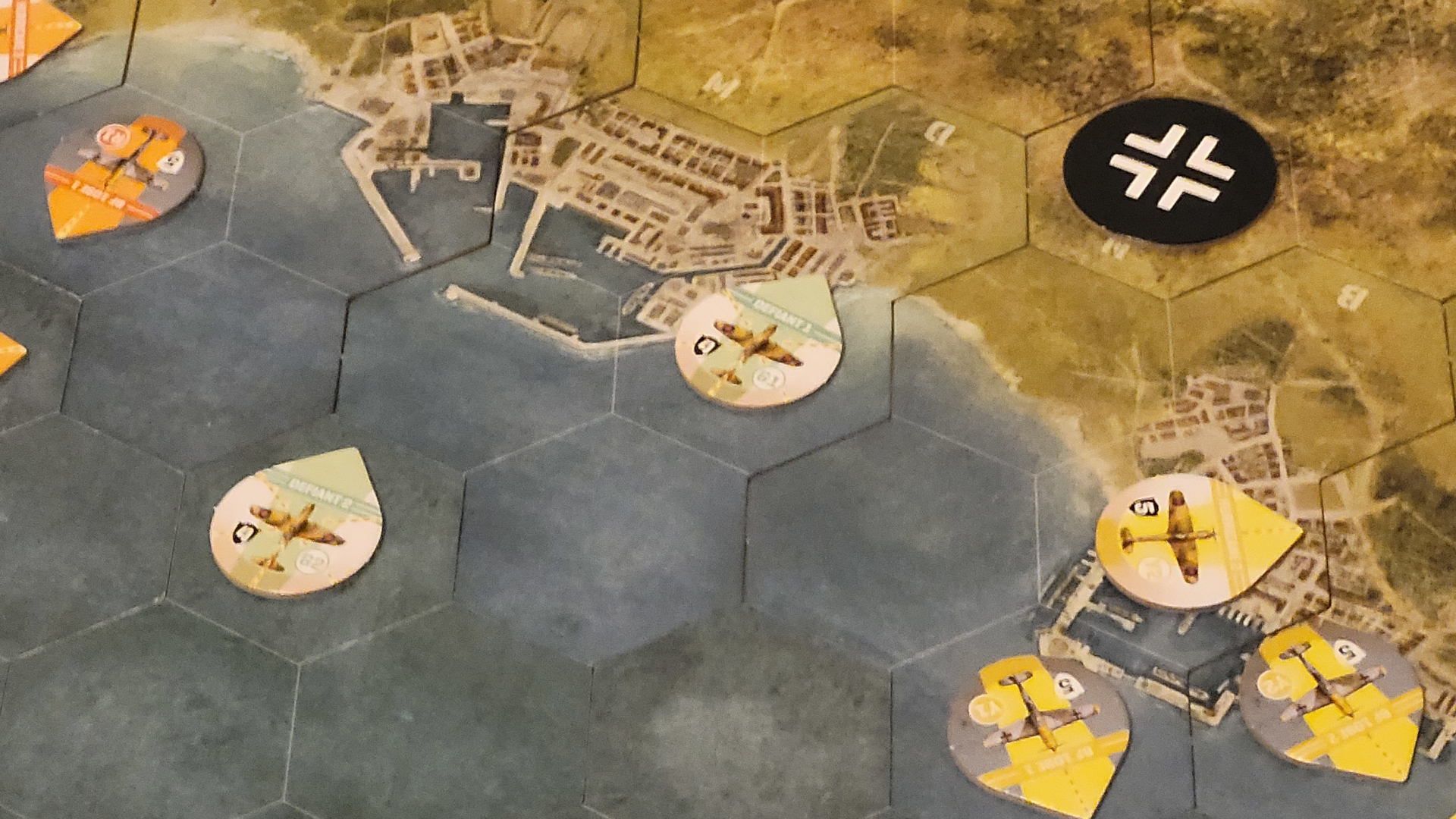
Deckbuilding is also an odd fit for the military theme of the game. Part of the genius of the earlier Undaunted games was that this odd couple pairing actually worked really well: adding cards equated to reinforcements and morale boosts while removing them represented casualties and suppression. These factors simply don’t apply to the same degree in the air where pilots operate individually and you can’t just rush up a reserve to plug a gap in the line. Instead, you’re left with a fun game that feels like an arranged marriage between awkward bedfellows.
To compensate, the game tries hard to present realistic and tactically varied scenarios. You’ll quickly learn the utility of dangerous barrage balloons in protecting ground targets and funnelling enemy planes toward killing zones. The confusion of night raids is simulated with decoy counters to confuse the defenders. Some scenarios feature ace pilot cards who can turn before they have to move and prove worth their weight in gold. In short? There’s plenty to keep you busy, and the varied setup makes up for the relative sameness of the planes involved.
Should you buy Undaunted: Battle of Britain?
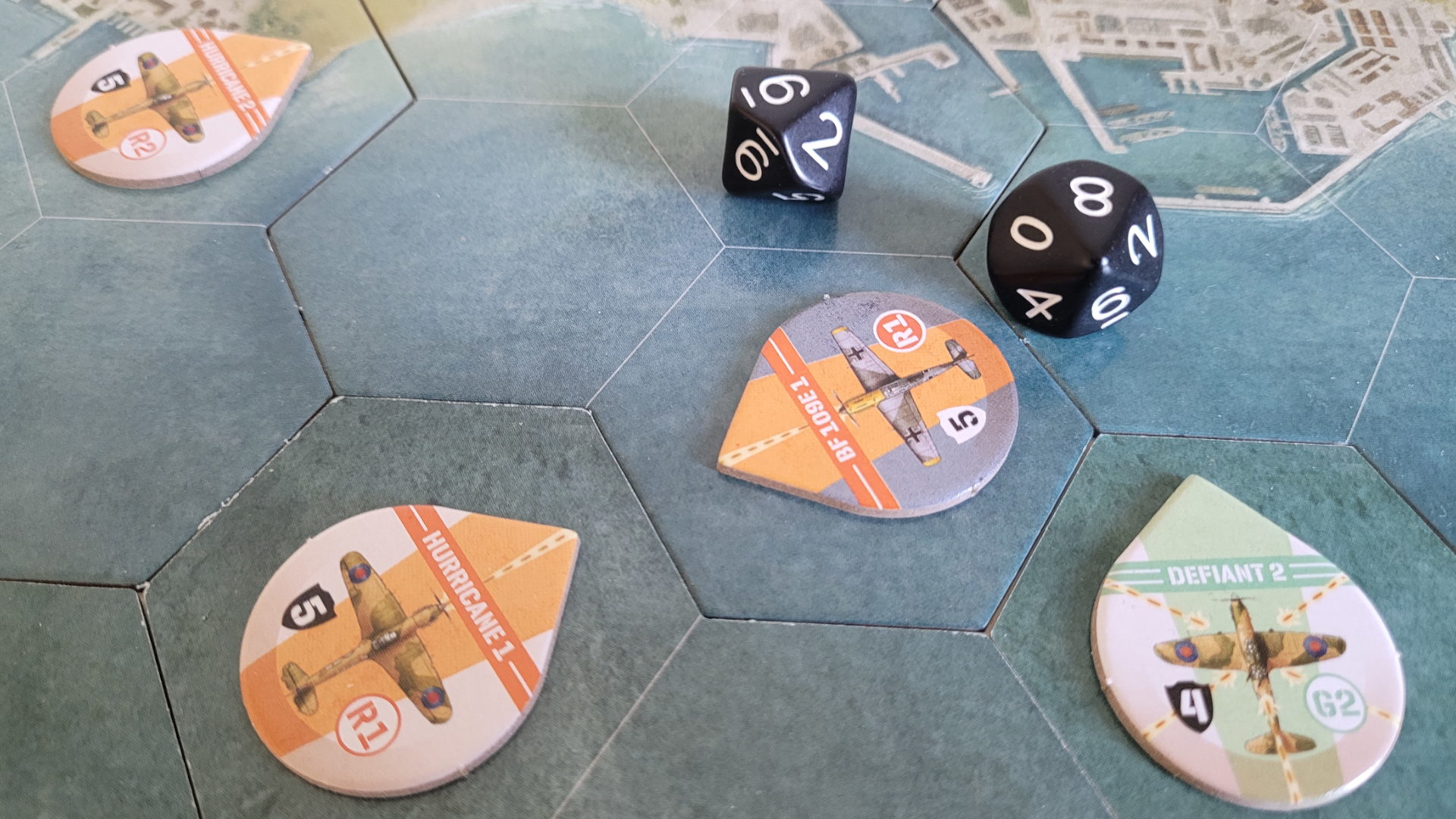
Undaunted: Battle of Britain is a very good game that has the misfortune of living in the shadow of its outstanding older siblings. What it does bring to the table, however, is novelty: for such a broadly similar game, this feels fresh and new, with the forced movement of aircraft forcing you to plan ahead as best you can.
As a result, it should have plenty of appeal to existing fans and newcomers alike, so long as they’re happy with playing out a slice of military history. At the other end of the scale, wargamers who were hoping for a similar balance of simulation and accessibility to the infantry games may be disappointed.
Buy it if...
Don't buy it if...
How we tested Undaunted: Battle of Britain
I played a number of scenarios from Undaunted: Battle of Britain to get a sense for its gameplay, replayability, and accessibility (particularly in terms of how it compares to previous Undaunted instalments). You can see find out more about our process with this guide to how we test board games and tabletop RPGs.
A review sample of the board game was provided by the publisher.
For tabletop recommendations, be sure to check out these board games for adults, must-have board games for 2 players, and good cooperative board games.







